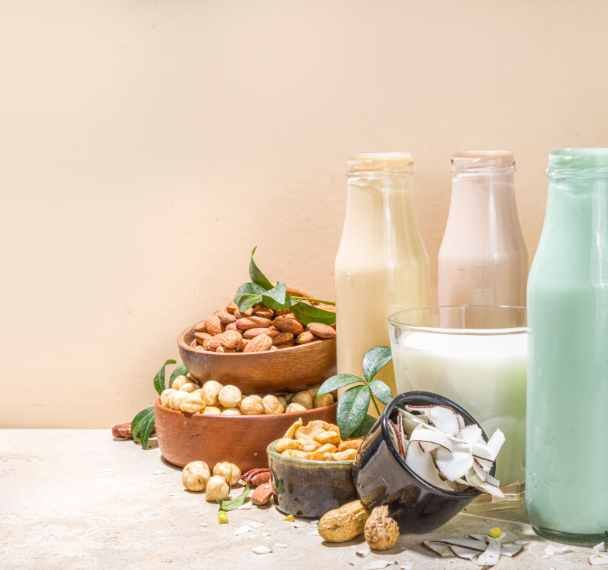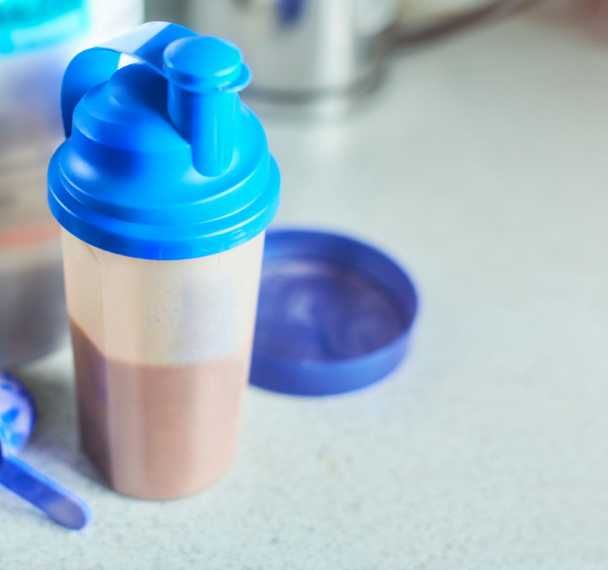From Concept to Market: Steps to Launching Fortified Food and Beverage Products
Mar 12, 2024
Introduction
Fortified foods and beverages are growing in popularity due to the increasing demand from consumers to prioritise their mental and physical health, especially since the COVID-19 pandemic.
Creating fortified food offers food and beverage businesses a unique opportunity to develop nutritious products, meet consumer demands, diversify their product offerings, and enhance their market competitiveness.
In this blog post, we will discuss fortified foods, including their legal aspects, and provide step-by-step strategies for effectively incorporating fortification into your product line.
Definition

Fortified food means that food and beverage companies voluntarily add vitamins and minerals to their products that have a nutritional or physiological effect. However, it has to follow the Regulation (EC) 1925/2006.
What is considered fortified food?
Firstly, to be classified as fortified food, vitamins and minerals can be added to your products for three reasons:
🔸To improve nutritional value of the product
🔸To address common deficiencies
🔸To compensate for vitamins and minerals loss during processing
If you are adding vitamins or minerals to your product for reasons other than fortification, such as preservation, your product will not be classified as fortified food. In this case, you will need to comply with the additives legislation.
Secondly, the Fortified food legislation does not apply to:
🔸Mandatory fortification of foods required by law, such as flour and margarine.
🔸Foods for specific groups, such as infant formula or medical foods.
🔸Food supplements which are a concentrated source of a vitamin or a mineral alone, or in combination, sold in dose form.
These products have separate guidelines and follow their own specific legislations.
Additionally, it is not allowed to add vitamins and minerals to raw foods like fruits, vegetables, raw meat, or alcoholic beverages with more than 1.2% alcohol content.
The Right Documents
In Europe and the UK, there is no need to register or license fortified foods. However, it is your responsibility to ensure compliance with the law.
Please note that since the UK's departure from the EU, the regulation now falls under the autonomous jurisdiction of both the UK and EU, each with its own separate legal and regulatory systems.
If you want to sell your products in the UK, it is advisable to refer to the GB Vitamins Minerals and Other Substances (VMS) Register for guidance on permissible substances.
Similarly, if you intend to sell your products in the EU, the Community Register is your go-to resource.
These documents give you valuable information, including:
🔸A list of vitamins and minerals that may be added to foods and their formulation.
🔸Prohibited substances, such as Ephedra species and yohimbe, due to their harmful effects on health.
🔸Restricted substances, such as trans fats.
🔸The minimum amounts of vitamins and minerals required to classify a food as fortified.
How to Fortify Food?

Steps to fortify food & beverages
* The final product must contain a significant amount of a vitamin or mineral during its entire shelf life.
To calculate that significant amount you have to refer to the daily reference intake (RI) also called nutrient reference values (NRV) for vitamins and minerals.

How to calculate Vitamins and minerals significant amount
As Illustrated on the graph above:
a) Your product contains 1 single portion: to reach that significant amount, the vitamin or mineral must count for a minimum of 15% of the reference intake per portion. This applies to food and beverages.
b) Your product contains multiple portions and the recommended serving size is less than 100g or 100ml: the vitamin or mineral must count for a minimum of 15% of the reference intake per portion. This applies to food and beverages.
c) Your product is classified as a food and contains multiple portions with either a recommended serving size above 100g or 100ml or no service size: the vitamin or mineral must count for a minimum of 15% of the reference intake per 100g/ml.
d) Your product is classified as a beverage and contains multiple portions with either a recommended serving size above 100ml, or no service size: the vitamin or mineral must count for a minimum of 7.5% of the reference intake per 100ml.
Examples
For example, you want to calculate the significant amount of Vitamin C. The daily reference intake of Vitamin C for an adult is 80mg/day.

Example: How to calculate the significant amount of Vitamin C
That amount applies to the total level of the vitamin or mineral, including amounts already present in the food.
** Similarly to the mandatory information on your nutrition labelling such as protein and fat content, add:
🔸The name and total amounts of the vitamins and minerals that have been added and are naturally present in your product.
🔸The % of the daily Reference Intake
🔸Ensure that the nutrition information is per 100g, per 100ml, or per portion of the food.
🔸Include these two statements: “Reference intake of an average adult (8 400 kJ/2 000 kcal)”, and a statement indicating the importance of a varied and balanced diet and a healthy lifestyle.
Fortification is a powerful tool for enhancing the nutritional value of foods, but it comes with a responsibility to follow the rules and serve the best interests of consumers.
Calculation of Nutrient Values and Overages

It can be quite difficult to know the exact amount of nutrients in the final product. However, it is important that this amount do not deviate significantly from what’s on the nutrition label, as the consumer could be misled.
According to the legislation, food & beverage businesses are allowed to calculate the amount of nutrients themselves without requiring laboratory analysis. This calculation should take into account factors such as the type of product, ingredient interactions, process, packaging, storage, and shelf-life.
To compensate for any losses during shelf-life, you can use overages. This means a product contains a higher level of nutrients at the beginning compared to the label details. This is common for fat-soluble vitamins like A, D, and E, which can oxidise.
Your vitamins and minerals supplier will be able to tell you the overages based on your product, packaging, and shelf-life.
Conclusion
In conclusion, food and beverage businesses have a unique opportunity to tap into the growing demand for fortified food.
By selecting appropriate nutrients, ensuring their bioavailability, complying with regulations and effectively communicating with consumers, businesses have the ability to create innovative and impactful fortified food options.
These options can greatly enhance the nutritional value of foods and beverages and improve consumers' overall health and well-being.
Link to related blogs you may enjoy
🔶The Ultimate Guide to Nutrition and Health Claims for Small Food and Beverage Businesses
🔶Formulation Secrets: 6 Steps to Craft Winning Flavours for Your Products
🔶10 Tips to Elevate Your Tastings & Drive Successful Product Development
References
Great Britain
Great Britain Nutrition legislation information sheet, https://www.gov.uk/government/publications/nutrition-legislation-information-sources/nutrition-legislation-information-sheet--2#food-supplements
Great Britain Regulation (EC) 1925/2006 on the addition of vitamins and minerals and of certain other substances to foods https://www.legislation.gov.uk/eur/2006/1925/contents
Great Britain Fortified foods: guidance to compliance on European Regulation (EC) No. 1925/2006 https://www.gov.uk/government/publications/fortified-foods-guidance-to-compliance-with-european-regulation-ec-no-1925-2006-on-the-addition-of-vitamins-and-minerals-and-certain-other-substances-to-food/fortified-foods-guidance-to-compliance-on-european-regulation-ec-no-19252006-on-the-addition-of-vitamins-and-minerals-and-certain-other-substance
Great Britain VMS Register, https://www.gov.uk/government/publications/register-on-adding-vitamins-and-minerals-to-foods/great-britain-register-on-the-addition-of-vitamins-and-minerals-and-of-certain-other-substances-to-foods
Great Britain Food information to consumers, Regulation (EU) No 1169/2011, Annexe XIII, Reference intakes, https://www.legislation.gov.uk/eur/2011/1169/annex/XIII
Great Britain Technical guidance on nutrition labelling, https://www.gov.uk/government/publications/technical-guidance-on-nutrition-labelling
Great Britain Nutrition labelling information leaflet, https://www.food.gov.uk/sites/default/files/media/document/nutritionlabellinginformationleaflet.pdf
EU
EU Regulation (EC) No 1925/2006 on the addition of vitamins and minerals and of certain other substances to foods, https://eur-lex.europa.eu/legal-content/EN/ALL/?uri=CELEX:32006R1925
EU Addition of vitamins and minerals, https://food.ec.europa.eu/safety/labelling-and-nutrition/addition-vitamins-and-minerals_en
EU Community Register, https://food.ec.europa.eu/system/files_en?file=2021-01/labelling_nutrition-vitamins_minerals-comm_reg_en.pdf
EU Nutrition declaration on packaging, https://europa.eu/youreurope/business/product-requirements/food-labelling/nutrition-declaration/index_en.htm
EU Food information to consumers, Regulation (EU) No 1169/2011, Annexe XIII, Reference intakes, https://eur-lex.europa.eu/LexUriServ/LexUriServ.do?uri=OJ:L:2011:304:0018:0063:en:PDF
EU Guidance document for competent authorities, tolerances for the control of compliance of nutrient values declared on a label with EU legislation https://food.ec.europa.eu/document/download/3eb7952a-43b8-4c6a-8091-349ea707a9a7_en?filename=labelling_nutrition-vitamins_minerals-guidance_tolerances_1212_en.pdf








